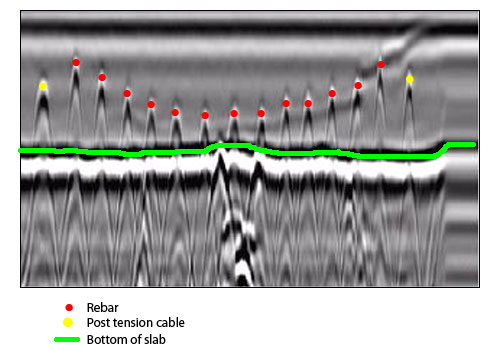Concrete Scanning: A Critical Action In The Direction Of Making Sure Structural Integrity and Safety And Security
In the world of building and infrastructure upkeep, the relevance of concrete scanning can not be overstated. By employing advanced modern technology and methods, concrete scanning offers as a critical device in guaranteeing that the stability and safety of buildings and bridges are promoted to the greatest criteria.
Value of Concrete Scanning
Concrete scanning plays a crucial role in guaranteeing the architectural integrity and safety and security of structures and framework jobs. By utilizing advanced innovations such as ground-penetrating radar (GPR) and electromagnetic induction, specialists can non-destructively inspect concrete frameworks to find possible flaws, voids, embedded items, and support format. This process enables very early detection of anomalies that can compromise the security of a structure, protecting against costly damages and guaranteeing the security of occupants.
Concrete scanning is specifically essential during the planning and construction stages of a task. Before drilling, cutting, or coring right into concrete, scanning helps determine the accurate places of rebar, post-tension cables, and other ingrained components, decreasing the threat of unintended hits that could bring about architectural weak points. Additionally, concrete scanning help in quality assurance by verifying the density of concrete covers and detecting any kind of disparities that might impact the overall longevity of the framework. Eventually, investing in concrete scanning solutions is not only an aggressive procedure to reduce threats yet additionally an essential step in the direction of preserving the long-lasting safety and security and stability of structures and framework.
Modern Technology for Concrete Inspection

Benefits of Very Early Detection
Timely detection of architectural problems can dramatically reduce risks and make sure the durability of building projects. By identifying possible troubles early on in the building process, stakeholders can take positive steps to deal with issues before they escalate right into bigger and more expensive problems. Among the vital benefits of early detection is the avoidance of structural failures, which can present severe security dangers and result in task delays and monetary losses.
Additionally, very early discovery enables prompt repair services and upkeep, which can aid prolong the lifespan of the framework. By addressing issues without delay, building and construction teams can avoid pricey fixings or also the need for early replacement of structural parts. This proactive strategy not just conserves money and time however likewise improves the general safety and sturdiness of the building and construction project.
Furthermore, early detection can boost job planning and decision-making by providing stakeholders with useful understandings into the condition of the framework. Armed with this info, task supervisors can make informed selections concerning construction timelines, materials, and methods, causing much more successful and reliable task end results.
Ensuring Architectural Security
Ensuring the structural stability of a building task is vital to its safety and security and durability. Structural security basics describes the capacity of a structure or infrastructure to keep its form and function under ecological problems and various loads. To accomplish this, detailed analysis and monitoring of the structure are important. Concrete scanning plays a crucial role in ensuring architectural stability by detecting possible issues such as gaps, delamination, or support deterioration that could endanger the integrity of the structure gradually.
By using advanced scanning technologies like ground-penetrating radar (GPR) and electro-magnetic induction, construction specialists can non-invasively evaluate concrete structures to determine locations of problem under the surface. This aggressive method allows for the early discovery of weaknesses or issues, making it possible for look at here now timely repair work or support to stop architectural failings.
Normal concrete scanning during different building stages and throughout the life cycle of a framework can help maintain its security, minimize dangers, and make certain the security of owners. By prioritizing architectural stability via concrete scanning, construction projects can improve their durability and longevity, ultimately adding to higher safety and security and long life.
Stopping Critical Failures
Applying regular inspections, such as concrete scanning, can reveal hidden issues like gaps, cracks, or deterioration that might compromise the honesty of a structure. By making use of innovative scanning innovations like Ground Permeating Radar (GPR) or Concrete X-ray, engineers can non-destructively evaluate the problem of concrete and determine weak points that need support or repair work.

Verdict
In verdict, concrete scanning plays an essential role in guaranteeing architectural integrity and safety you could look here by making use of innovative innovation for early discovery of potential problems. This aggressive approach assists avoid vital failings and makes certain the security of structures. It is necessary to prioritize concrete inspection as a conventional technique to safeguard the longevity and security of buildings and facilities.
Concrete scanning plays a crucial role in guaranteeing the structural honesty and security of buildings and facilities projects. Additionally, concrete scanning help in top quality control by verifying the thickness of concrete covers and discovering any type of inconsistencies that might influence the general durability of the framework. Concrete scanning plays a critical function in guaranteeing architectural stability by detecting possible problems such as spaces, delamination, or support deterioration that could compromise the stability of the framework over time.

In final thought, concrete scanning plays a critical duty in making sure structural stability and safety by utilizing advanced innovation for early discovery of possible concerns.